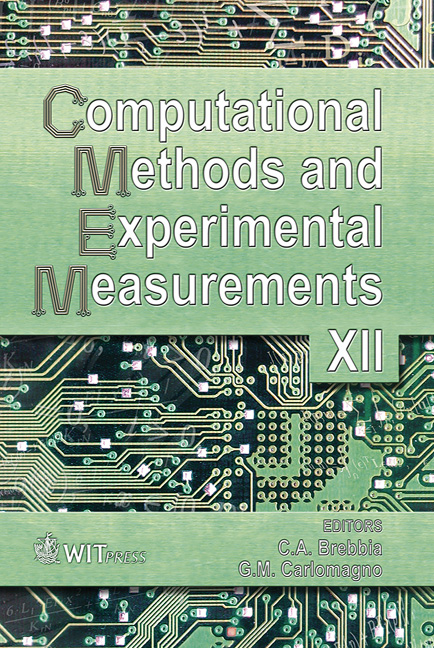Analysis Of Particular Experimental Measurements In Cavitating Stream Flow
Price
Free (open access)
Transaction
Volume
41
Pages
10
Published
2005
Size
362 kb
Paper DOI
10.2495/CMEM050791
Copyright
WIT Press
Author(s)
G. Ciaravino
Abstract
In the present paper an analysis is conducted on the application of the acoustic method and the Laser-Doppler Anemometer (LDA) to measurements of turbulence in cavitating stream flow in a short pipe. When developed cavitation is detected in experiments conducted using the acoustic method, we find structures comprising vortices (travelling cavitation) and structures comprising large cavities (fixed cavitation) which form periodically and are transported by the stream flow. Under different operating conditions, the LDA measured the longitudinal component of velocity agitation and the corresponding power spectral density. This made it possible to detect the presence of quasi-periodic components in the turbulence structure with frequencies coinciding with those of the vortices and the cavities, under the corresponding operating conditions. This points to a reciprocal validation of the two measurement methodologies (acoustic and laser) and the influence of cavitation phenomena on the turbulent structure and on the flow characteristics. Keywords: cavitating flow, experimental measurements of turbulence, Laser- Doppler Anemometer, acoustic method. 1 Introduction Experimental analysis of cavitation phenomena has received increasing development over recent decades thanks to particular measurement techniques and to advanced instrumentation. The measurement of these phenomena is particularly complicated as cavitation generally takes place in an enclosed environment and so any instrumentation that is inserted into the stream flow will cause a considerable disturbance. Moreover, it is well known that the interest in
Keywords
cavitating flow, experimental measurements of turbulence, Laser- Doppler Anemometer, acoustic method.





